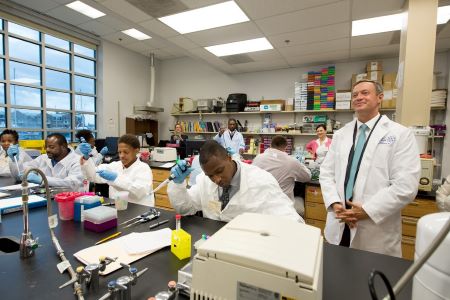Educational attainment: Educational equity is key to building a strong, resilient workforce.
Insights & Analyses
- Nationwide, Black and white immigrants are more likely to hold a college degree than their US-born counterparts. The reverse is true for Latinx, Asian American, and Pacific Islander adults: those born in the US are more likely to hold these degrees than those born abroad.
- In 2022, women in the US were more likely than men to have earned a bachelor’s degree or higher. This trend was also the case across all racial and ethnic groups except for Asian Americans, in which men had a slight advantage.
- Across ancestries nationwide, Indian and Taiwanese adults are most likely to hold a bachelor’s degree or higher (85 percent and 84 percent, respectively).
- Residents in East Coast states and districts, such as Massachusetts and the District of Columbia, are most likely to have a bachelor’s degree, while those in Southern states like West Virginia and Mississippi are least likely to have a bachelor’s degree.
- More than half of all adults living below 200 percent of the federal poverty level in Irvine, California, hold a bachelor’s degree or higher — the highest percentage among the 100 largest US cities.
Drivers of Inequity
The gap in educational attainment between White students and students of color is largely driven by disparities in school poverty rates. Students of color are more likely to attend high-poverty schools because of ongoing racial segregation forged through historical practices such as racially exclusive housing covenants and zoning laws as well as ongoing ones such as discriminatory hiring and mortgage lending. Students at high-poverty schools often have less access to quality resources and score lower on standardized testing than their wealthier counterparts. At the same time, the rising cost of college combined with decreased financial aid prevents many students of color, who are disproportionately low income, from attending college.
Strategies
Grow an equitable economy: Policies to ensure educational equity
- Expand access to high-quality public education, create cradle-to-career pipelines for vulnerable youth, increase access to affordable childcare, and invest in universal pre-K.
- Reform harsh, "zero tolerance" school discipline policies to keep youth in school and on track to graduate.
- Implement sector-focused workforce training and placement programs and apprenticeships that create pathways to good jobs for workers with barriers to employment.
- Align economic development and workforce policies and strategies to grow high-opportunity sectors that provide pathways for people without four-year degrees.
- Ensure access to higher education for immigrant students by providing in-state tuition rates regardless of their immigrant status and by increasing access to financial aid and scholarships.
- Remove law enforcement officers from K-12 schools and hire more counselors and support staff.
- At the federal level, lower and/or eliminate tuition and fees at four-year public colleges and universities, tribal colleges, community colleges, trade schools, and apprenticeship programs, provide additional financial assistance to Historically Black Colleges and Universities, increase and expand access to Pell Grants, and eliminate current student loan debt for all.
Strategy in Action
Baltimore's BioTechnical Institute training program connects high school grads to high-growth careers. The Baltimore region is a national leader in biotechnology and medical research, which accounted for one-third of new jobs over the last decade. But these jobs are often out of reach for people with less than a college degree. The BioTechnical Institute of Maryland, based in Baltimore, prepares low-income, mostly African American high school graduates for competitive careers in leading labs in the region. More than 75 percent of its 425 graduates have gotten jobs in laboratory settings, and roughly 40 percent of graduates have gone on to pursue advanced degrees. The program also leads to wages that are 90 to 160 percent above the participants' pre-program wages. Read more.



